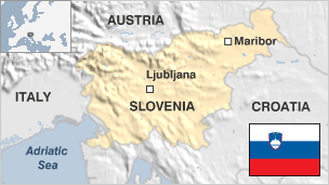
Facts and stats about Slovenia
Slovenia is a country of opposites: situated between the Alps to the North and Adriatic Sea to the West it provides both plentiful opportunities for enjoying winter sports and pleasant summer resorts. It has a typical urbanization of a developed country, yet its land is predominantly covered with forest (63.28% of land area in 2007), which is comparable to Scandinavian countries with significantly lower density of population. It’s been a member of European Union since 2004 and was the most economically advanced nation within ex-Yugoslavia, but the people are still heavily under the influence of tradition, which is somewhat slowing down the economic development. Unemployment rate has increased in the past few years due to recession, peaked in 2012 at almost 12% and is now stabilized and slowly dropping. Since the breakup of Yugoslavia, which Slovenia managed to escape relatively unscathed (with only ten-day war, compared to four years in Croatia), and especially since joining the European Union and consequently adopting euro as a national currency, Slovenia is becoming more and more attractive both for business and real-estate investments, and as a tourist destination (8.42% of total income in 2008). On the other hand, due to smallness of the country as a whole - there are only two public universities in the country and the market for specialized businesses is small due to the language barrier - there’s a big brain-drain to other members of European Union and anglophone countries, even more pronounced since the financial crisis of 2008.
- Agriculture 122
- Background 11
- Conflict 1
- Cost of living 55
- Crime 131
- Culture 31
- Disasters 1
- Economy 2922
- Education 444
- Energy 1150
- Environment 238
- Geography 83
- Government 232
- Health 273
- Import 5
1.99 million
Population. Ranked 147th in 2013.
$22,000.51
GDP per capita. Ranked 32nd in 2012.

20,140 sq km
Sq. km. Ranked 145th in 2008.